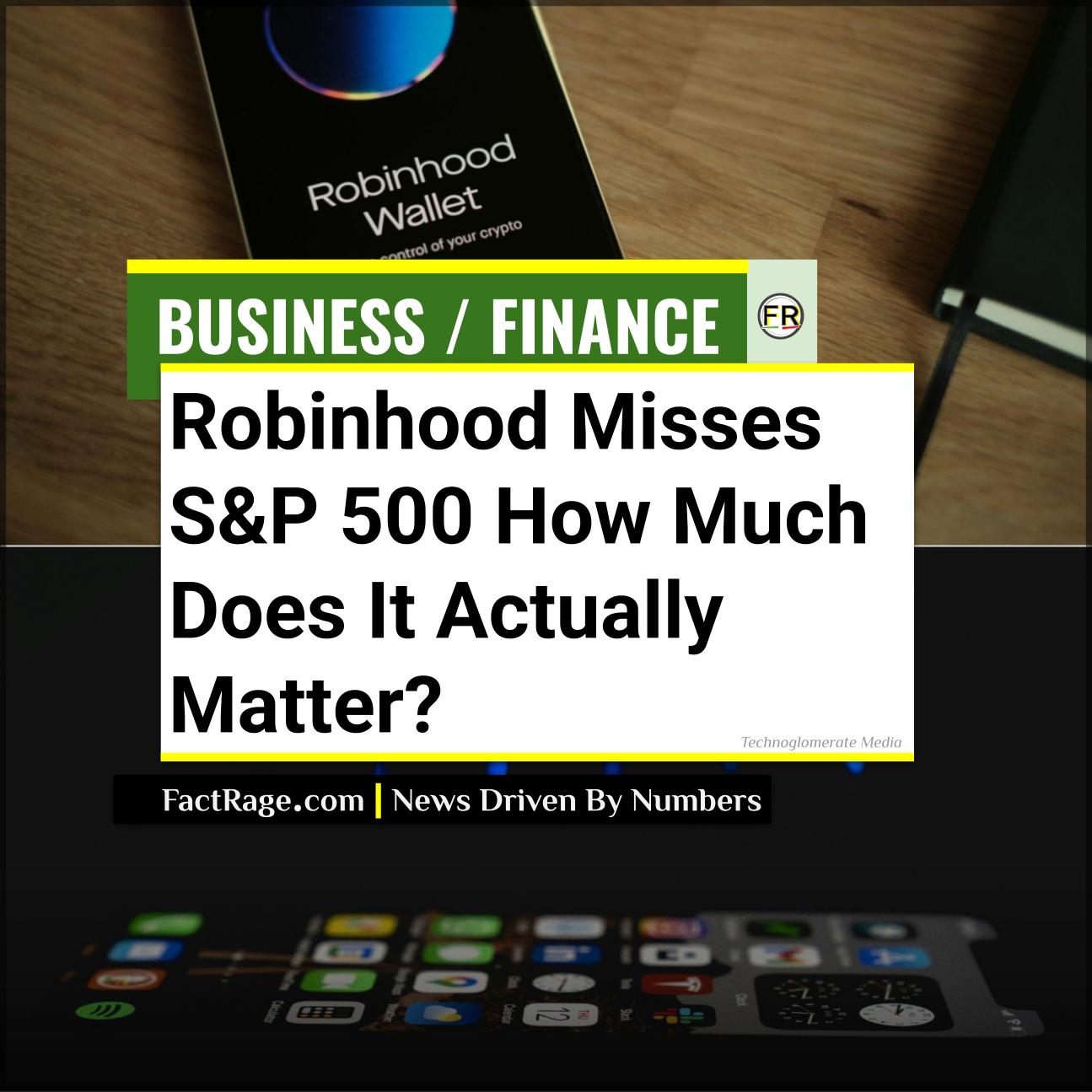NATIONWIDE – Despite widespread speculation, Robinhood Markets Inc. did not receive an invitation to join the S&P 500 in the most recent quarterly rebalancing announced last Friday.
Key Facts
- Speculation and Anticipation – Robinhood shares saw a significant rally in weeks leading up to the S&P Dow Jones Indices announcement, fueled by expectations of its inclusion in the benchmark index.
- No Index Changes – S&P Dow Jones Indices ultimately decided not to make any changes to the S&P 500 components during the latest quarterly review, leaving Robinhood and other potential candidates out.
- S&P 500 Criteria – While Robinhood met several eligibility requirements, including market capitalization and profitability, the S&P Dow Jones Indices committee has discretion beyond these metrics.
The decision by S&P Dow Jones Indices not to alter the S&P 500’s composition in the latest quarterly rebalancing has led to a recalibration of expectations for companies like Robinhood Markets Inc.
What Led to Robinhood’s S&P 500 Hopes?

In the weeks prior to the announcement, Robinhood’s stock experienced a notable surge, reaching its highest level since its 2021 market debut. Analysts from major financial institutions, including Bank of America, had identified Robinhood as a “prime candidate” for inclusion. This optimism stemmed from Robinhood’s fulfillment of several key S&P 500 eligibility criteria. To be considered, companies must be U.S.-domiciled, listed on a major U.S. exchange, and have a market capitalization of at least $20.5 billion. Additionally, they need to demonstrate profitability with a positive sum of GAAP net income over the four most recent consecutive quarters and in the most recent quarter. Robinhood met these financial thresholds, boasting a market valuation of $66.1 billion as of last Friday’s close and consistent profitability.
The Discretionary Nature of S&P 500 Inclusion
Despite meeting the stated quantitative criteria, inclusion in the S&P 500 is not automatic. The S&P Dow Jones Indices committee makes the final decision, and they are not obligated to add a company even if it qualifies on paper. The committee’s deliberations are private, meaning the specific reasons for any omission are not publicly disclosed. In this instance, no stocks were added to or removed from the benchmark, indicating a broader decision to maintain the current index composition. Past observations suggest that factors beyond basic eligibility, such as a company’s volatility or sector diversification, can influence the committee’s choices. Robinhood’s shares experienced a decline following the announcement, consistent with a “buy the rumor, sell the news” phenomenon, where stocks gain on speculation and then pull back if the anticipated event does not materialize.
What Impact Does S&P 500 Inclusion Have on a Stock?
Being added to the S&P 500 is often seen as a significant milestone for a company, largely due to the passive investment flows it can generate. Index funds and exchange-traded funds (ETFs) that track the S&P 500 are mandated to purchase shares of included companies, which can lead to increased demand and potentially a higher stock price. However, recent studies suggest that the impact of S&P 500 inclusion on a stock’s price has diminished over time. While the 1990s saw an average one-day gain of 7.4% for newly added stocks, this impact decreased to just 0.8% in the 2010s, a phenomenon referred to as the “disappearing index effect.” For Robinhood, even if it had been added, its market capitalization would have resulted in a relatively small weighting within the index (approximately 0.13%), limiting its potential impact on the overall S&P 500 performance.









